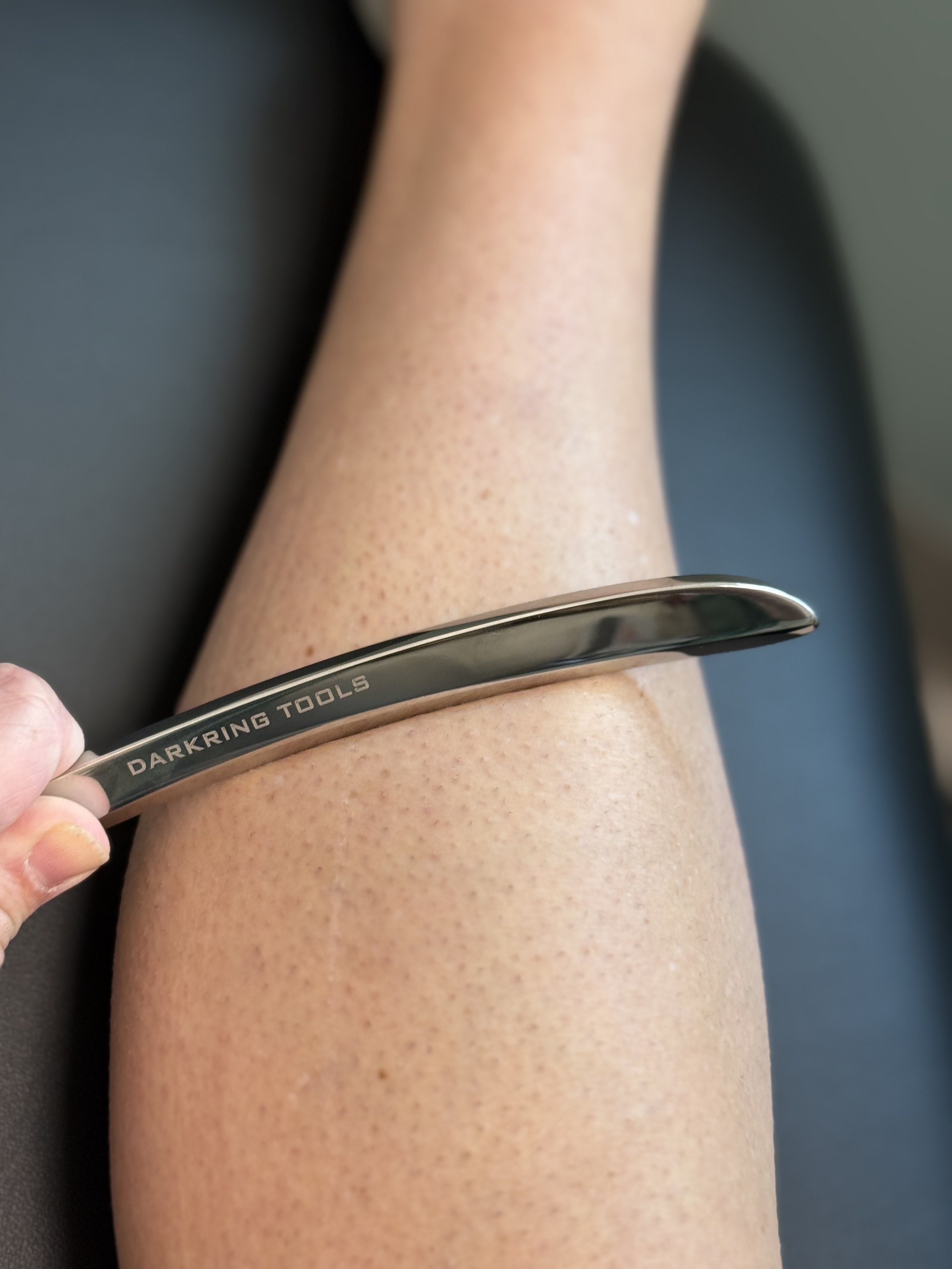
Instrument assisted soft tissue mobilization (IASTM)
What Is Scraping (IASTM) and How Is It Used in Physical Therapy?
Instrument-Assisted Soft Tissue Mobilization (IASTM), often referred to as “scraping,” is a specialized manual therapy technique used by physical therapists to treat soft tissue dysfunction. This method involves using specially designed tools—such as stainless steel instruments similar to those used in Graston Technique—to detect and treat areas of tissue restriction, scar tissue, or chronic tightness. Unlike traditional massage, scraping uses precise angles and controlled pressure to influence the deeper layers of fascia, muscle, and connective tissue.
IASTM is particularly effective for breaking up scar tissue and fascial adhesions that may develop after surgery, injury, or repetitive strain. When tissues become stiff or bound down, they can limit mobility and cause pain. Scraping helps to mechanically stimulate these areas, encouraging tissue remodeling and improving overall mobility. It also promotes a mild inflammatory response that signals the body to begin a healing process—bringing in new cells to repair the area and laying down healthier collagen fibers.
One of the key benefits of scraping is improved blood flow and lymphatic drainage. By stimulating the skin and underlying tissues, IASTM increases local circulation, helping to reduce inflammation and speed up the recovery of injured or overworked muscles. This makes it a great tool for patients recovering from tendonitis, muscle strains, or chronic overuse injuries. It can also be used as part of a warm-up routine to prepare the tissues for movement or exercise.
Unlike aggressive or painful scraping seen in some alternative practices, physical therapists use IASTM in a controlled and evidence-based manner. Tools are chosen and techniques tailored to each individual, often in combination with stretching, corrective exercises, or neuromuscular re-education to create long-term changes. The goal is not to bruise or cause harm, but rather to facilitate better movement, reduce discomfort, and restore healthy tissue function. When used properly, IASTM can be a powerful part of a comprehensive rehabilitation plan.